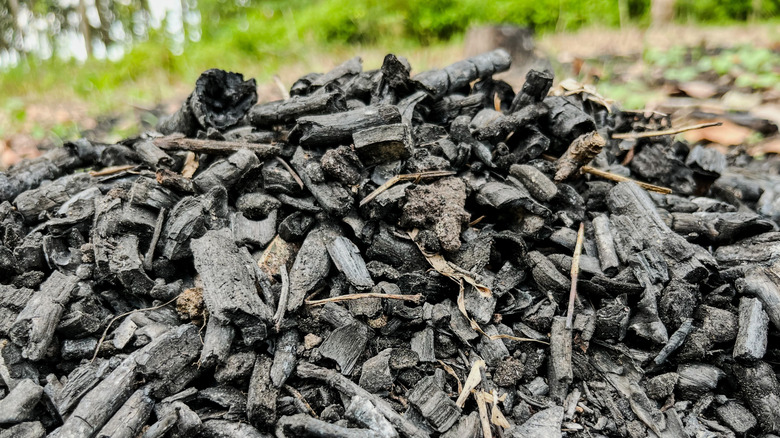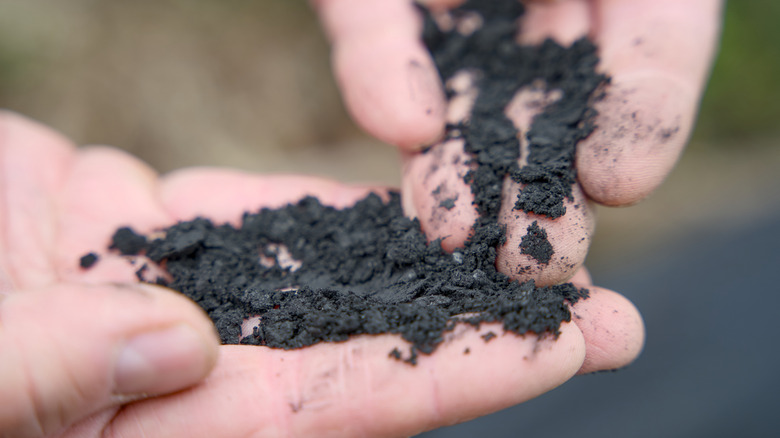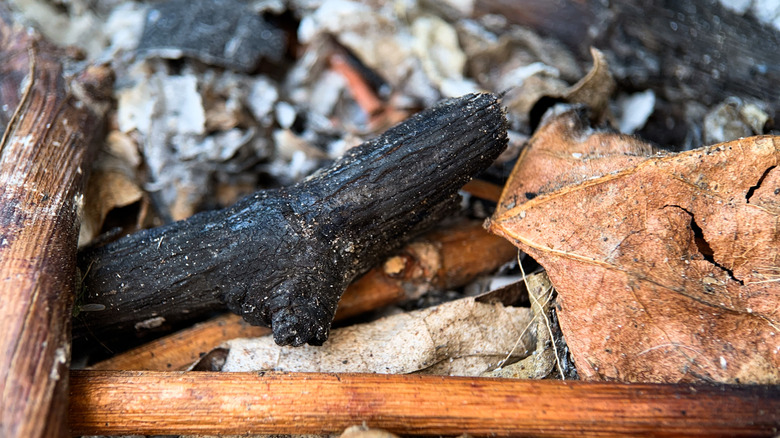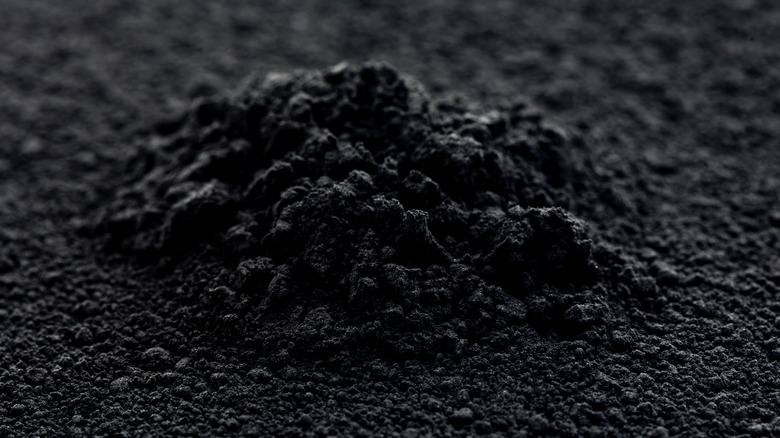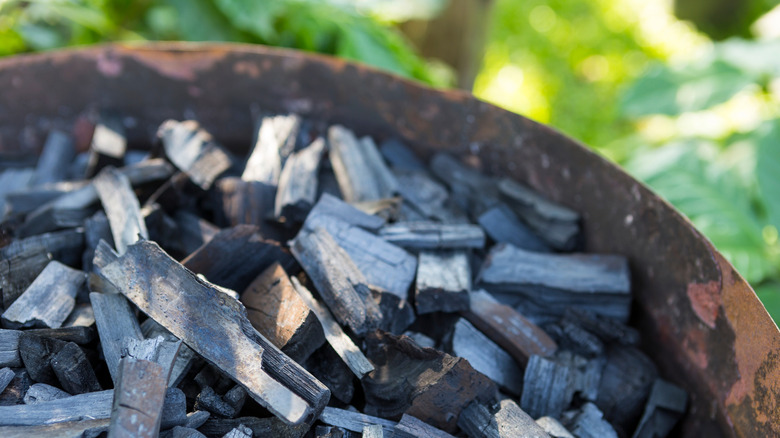4 Types Of Charcoal You Can Use To Boost Your Garden (& How Are They Different?)
If you are into gardening and barbecuing every weekend, chances are you are looking for ways to repurpose charcoal around your home and garden — and rightfully so. Charcoal is widely used as a soil amendment as it increases soil fertility, improves water retention, and increases yield. While there are many types of charcoal out there, gardeners mostly rely on four. These include biochar, lump charcoal, charcoal ash, and activated charcoal.
Each one has its own unique chemistry, pros and cons, and ideal use cases. The trick is to know which one and how much of it to use. Also, each type has its ideal use cases and using the wrong type or the wrong amount can actually do more harm than good. For instance, biochar helps draw out pollutants and excess carbon dioxide from the soil, whereas wood ash is rich in nutrients, especially calcium, which can boost plant health.
Similarly, lump charcoal is valued for its ability to enhance soil structure and improve nutrient availability. And, finally, activated charcoal can be added to compost bins to control gross smells in your home. But before you go around sprinkling charcoal from your barbecue grill on your lawn, make sure you understand what your soil and plants need, as not all soils and plants respond similarly to charcoal.
Biochar
Biochar is created by carbonizing organic material at high temperatures (about 300 to 1000 °C) with very little to no oxygen. This process is known as pyrolysis, and it removes volatile gases, leaving a carbon-dense residue known as biochar. While biochar is not a fertilizer, it can still help the soil hold onto nutrients such as nitrogen, phosphorus, and carbon. The reason is that it has a charged surface and porous structure, which lets the biochar lock in the nutrients. When used correctly, it can increase crop yields and also improve the ability of the soil to retain moisture.
For best results, start modestly with about 5 to 10% by volume. If, however, the desired results are not achieved, you can gradually increase the concentration. It works best when it is well incorporated into the soil, ideally 6 to 12 inches deep. However, handle biochar with care. Its fine dust can create explosive mixtures with air in tight spaces and stored too densely, it may heat up and ignite on its own.
Wood ash charcoal
Charcoal ash or wood ash can be used as a source of calcium and potassium. Depending on the type of wood it is sourced from, it can contain 5% potash, as much as 20% calcium, and around 1% phosphate, along with trace amounts of micronutrients such as iron, manganese, boron, copper, and zinc. Beyond its nutrient value, wood ash can also be used to help neutralize acidic soils. However, if your garden soil already has a pH of 7 or over, it's best to avoid adding wood ash to the garden.
For most gardens, an application rate of roughly 10 to 15 pounds per 1,000 square feet per year is more than enough. However, some sources even mention rates of up to 20 to 25 pounds per 1,000 square feet per year. Many gardeners even mix it with compost and then work the mixture into the garden. However, avoid using wood ash charcoal on acid-loving plants such as blueberries and azaleas.
Activated charcoal
Activated charcoal or activated carbon is an extremely fine, black, powdery substance that is created by pyrolyzing and oxidizing charcoal. The end product is highly porous and has a huge surface area that allows it to bind and hold onto a number of substances. It helps protect plants and soil by reducing bacterial numbers and mold growth while also absorbing unpleasant odors, making it a popular choice for closed terrariums. You can also add it to pots that don't have drainage holes. Due to its porous nature, it will absorb all the excess moisture, saving your plants from root rot.
As far as the application rate is concerned, 500 grams to 1 kilogram of activated charcoal per square meter is a safe starting point. Or alternatively, you can mix it into the soil at about 5 to 10% of the total volume. These values, however, can be adjusted to match different soils, plant species, and desired outcomes. Lastly, view it as a specialized treatment for the soil rather than an amendment, as activated charcoal provides minimal nutritional benefits to the soil.
Lump charcoal
Lump charcoal comes from burning down whole pieces of hardwood into coal. It's free of binders and fillers — just simple, clean, high-quality charcoal. And since it is free of chemical binders like those that are present in many commercially sold briquettes, it is generally safer to work into garden soil or compost in limited amounts. But still perform a soil test before adding it to the soil. You can even add it to your own DIY compost bin; however, just make sure that it has properly cooled before transferring it.
You can also extend the life of your cut flowers by adding a piece of lump charcoal to the vase water. It will absorb the toxins and bacteria, keeping the water cleaner for longer. In addition, you can even use pieces of lump charcoal as mulch. If the pieces are too large, break them into smaller pieces of about 1 inch. It will keep out weeds and retain moisture while also gradually releasing moisture in the soil.
